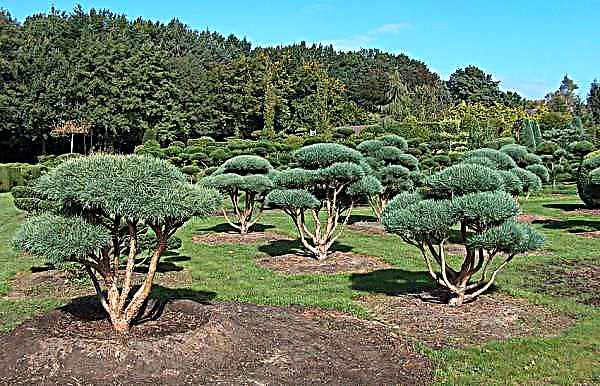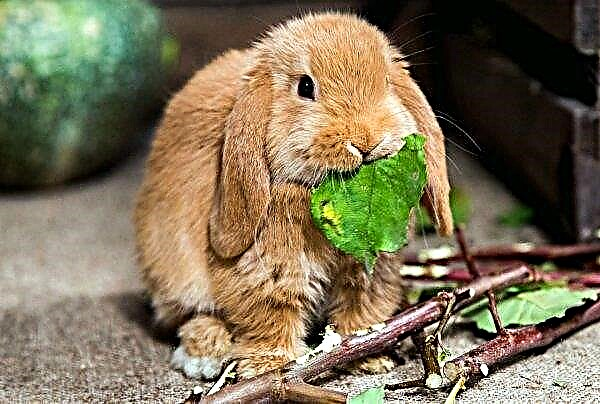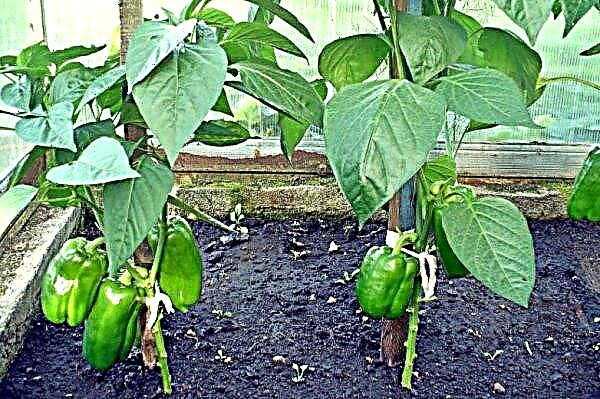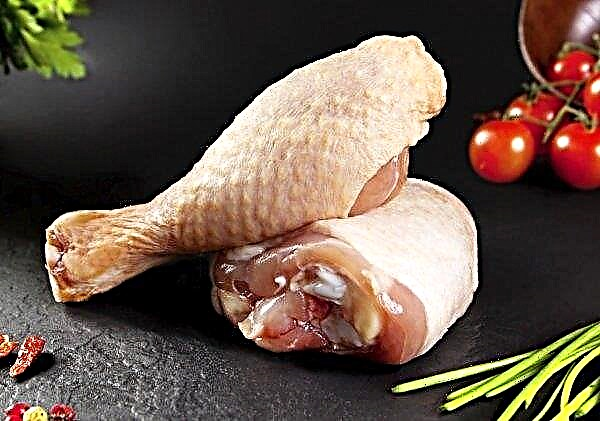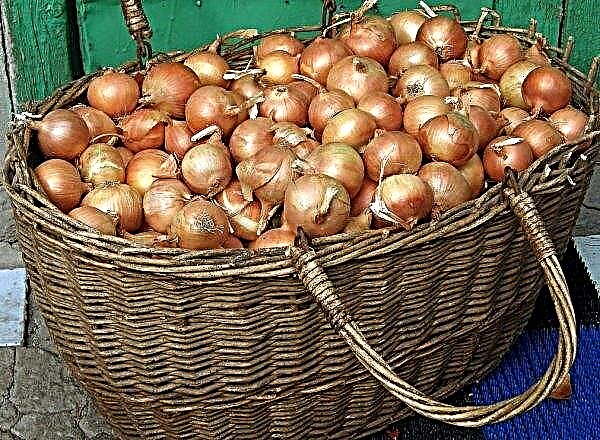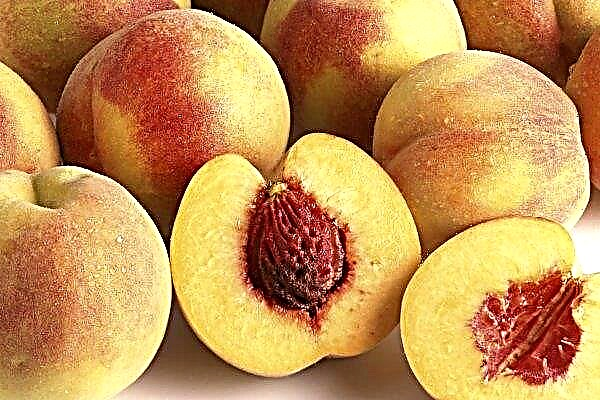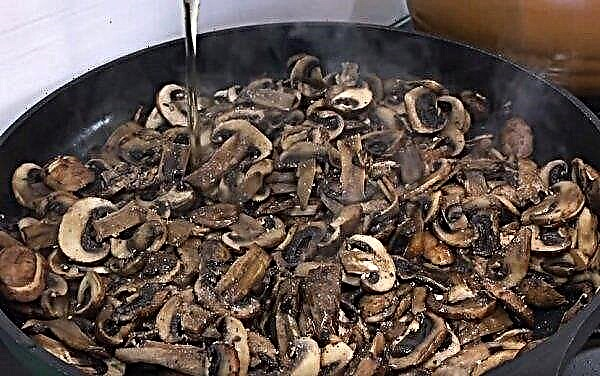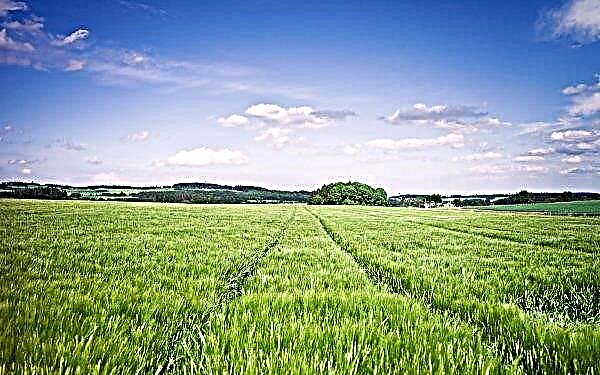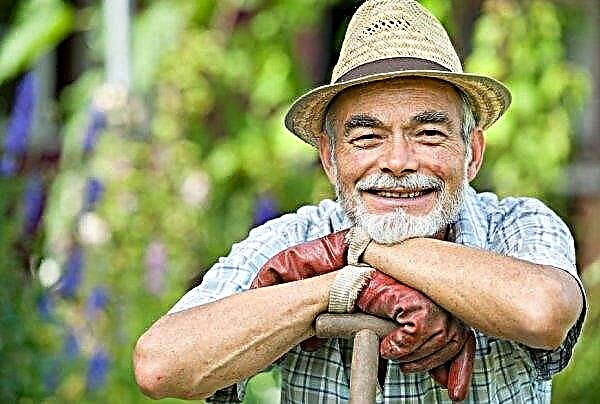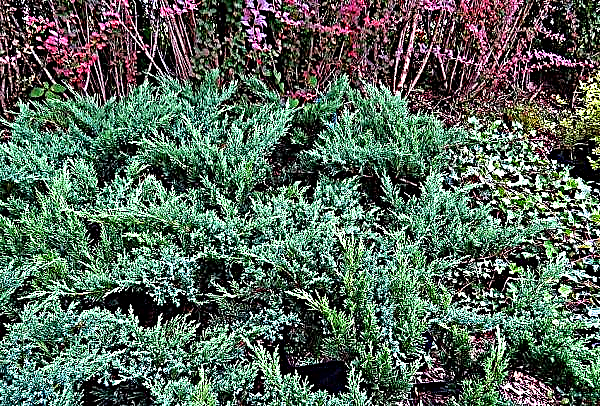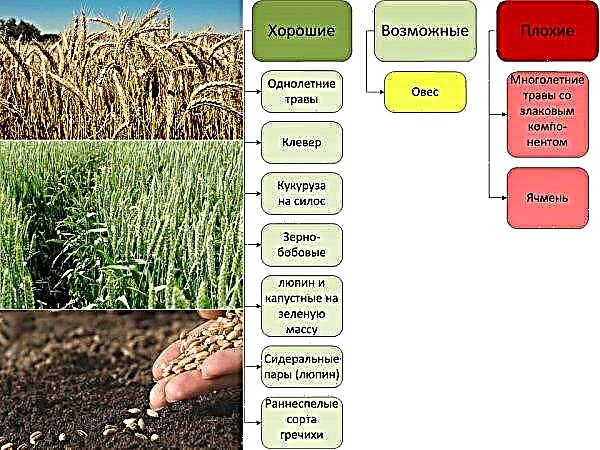Today, breeders have bred many varieties and hybrids of onions. Because of this diversity, it is often difficult for summer residents and gardeners to make a choice. Before buying, it is important to study the full information about the attracted variety and find out if it is suitable for growing in the region. You can find out about the advantages and disadvantages, as well as how to grow the Corrado variety, from the article.
Description and characteristics of the variety Corrado
The onion variety Corrado is young. It was received by Dutch breeders and officially registered in the Russian Federation in 2015.
What does it look like
Bulbs of the Corrado variety have a rounded shape. They are covered by a dense shell, consisting of two layers of husk, which, of course, affects the duration of the keeping time of the heads. The color of the husk is golden brown. The average weight of each head is 110–130 g. The taste of onions is semi-sharp.
The leaves of the plant are hollow, grow in 2 rows. In length, they grow by 30 cm. In color, green. The bulbous neck is thin or of medium thickness.
Did you know? The largest bulb in the world was raised by 68-year-old Englishman Peter Glazbruk. Her weight was 8.9 kg.
Ripening dates and productivity
The maturation of the heads of the Corrado variety occurs in the early medium. In regions with a warm climate, they are ready for harvesting 95–98 days after emergence. In the middle lane, ripening occurs in 100-105 days.
 Onion productivity is high - about 1 kg of onions can be removed from 1 m²
Onion productivity is high - about 1 kg of onions can be removed from 1 m²
Pros and cons of the variety
- Gardeners who have already produced the cultivation of the described variety, note such positive qualities:
- high fruiting;
- long preservation of the heads;
- resistance to shooting;
- good immunity to major diseases and harmful insects;
- a high percentage of fruit ripening (96-100%);
- the presence of double husks.
- Among the shortcomings are:
- low level of winter hardiness;
- suitability for cultivation only in the southern regions and the middle lane.
Landing time
In the southern regions and the middle lane, onion planting should begin in October-November, when the soil temperature reaches + 5 ° C. In the northern regions, it is better to plant the plant in spring, when the earth at a depth warms up to + 10 ° С.
As for all garden plants, whose fruits are formed underground, for onions, planting is recommended on the days of the waning moon. To do this, check the lunar calendar for the current year.
Learn about growing other varieties of onions:
How to Grow Corrado Onions
In order to successfully grow a culture, it is necessary to purchase high-quality planting material, prepare a site and observe planting technology.
Preparatory work before landing
Onions Corrado does not impose special requirements on the quality and composition of the soil. High yields are obtained by planting it in loose, drained, loamy soil with a neutral pH. If the soil is too acidic, lime must be added, and 2 years before the onion is planted. It is desirable to feed the site with organic matter - humus. It also needs to be made for digging, but not earlier than 1.5 years before placing the seeds in the ground.
 For planting, it is better to cook high warm beds
For planting, it is better to cook high warm beds
Seat selection
When selecting a landing site, it is important to follow crop rotation rules. According to them, it is better to plant onions where legumes, tomatoes, cabbage, and potatoes were previously grown. The worst predecessors for it are all types of onions, garlic, carrots, cucumbers. In the same place, the plant can be grown 2 years in a row. Further, it is allowed to land on the same bed only after 5 years.
The plot where it is planned to equip the onion beds should be well-lit and sheltered from drafts.
Seed preparation
Most often, Corrado onions are planted from sevka. When buying, you should evaluate its appearance. On the heads should be free of defects such as spots, cracks, damage. For planting, only dense and dry onions are suitable.
Storage of one's own set must take place under certain conditions: at a temperature of + 10 ... + 15 ° С and humidity 70–75%. For planting, samples of 1 cm in diameter are selected.
 When purchasing packaged seeds, pay attention to the expiration date
When purchasing packaged seeds, pay attention to the expiration date
If you prefer sowing seeds, then you need to choose those that are packed by reputable manufacturers. Before planting, it is advisable to test them for germination. To do this, 10-15 seeds should be placed in a small amount of water and sent to a room where the temperature is warm. Seeds are considered good if more than half have sprouted.
Disembarkation technology
When planting a seed, it is necessary to observe a distance of 10 cm from each other. Planting material is embedded 2-3 cm deep. The gap between the rows should be 25 cm. After embedding, the onions are sprinkled with earth. The beds are covered with mulch of dry foliage, tops, spruce branches, and straw.

Planting from seeds is carried out, after growing seedlings. Sowing is done in wooden boxes or cups 6–9 cm high, filled with purchased substrate for seedlings, or with soil mixed from leafy soil (1 part), turf soil (1 part), humus (1.5 parts), sand (0, 5 parts).
Grooves are made in the soil and seeds are laid in them with a distance of 1.5 cm. Sprinkle on top with a 1 cm layer of soil.
Important! Land made with one's own hand must be decontaminated by boiling, soaking over steam, calcining in an oven or microwave, watering with a solution of potassium permanganate.
Containers with seedlings should be covered with a film or glass and placed in a room where the temperature is maintained at about + 25 ° C. After emergence, the film should be removed, and the temperature reduced to + 15 ... + 17 ° C. As the top soil layer dries, it is moistened.
When two sheets appear, you need to pick. Top dressing is carried out 2 times, shortly before the sprouts move to the open ground, with an interval of 2 weeks. Use superphosphate (20 g), potassium chloride (5 g) and urea (10 g), which are diluted in a bucket of water, or an aqueous solution of chicken droppings (1:10).

2 weeks before the sprouts will be moved to open beds, you should start hardening them - take them out into the air for a while, gradually increasing the time interval.
Plant transplantation into the soil is carried out in April-May.. They are placed in previously dug grooves located at a distance of 30 cm from each other. A gap of 5 cm is observed between the plants. The embedment depth is 1 cm. The planting is completed by watering and mulching.
Care Features
Caring for a vegetable plant involves watering, feeding, loosening, mulching, preventive measures against pathogens and harmful insects.
Watering
Moisturizing this onion variety requires moderate, with a frequency of 1-2 times a week. In drought, they need to be produced more often. Watering is only warm water, warmed up to room temperature.
The frequency of irrigation is reduced in the middle of the growing season, and 2–3 weeks before the collection of heads they are completely stopped.

Loosening the soil and weeding from weeds
Each soil moisture and precipitation must be accompanied by loosening. This procedure is needed to prevent the formation of a dense crust on the soil surface and improve its moisture and air conductivity.
To prevent the development of diseases and attacks of harmful insects, weeds must be removed in a timely manner. In addition, weeds take away light and mineral substances from a vegetable plant, thereby harming growth, development and fruiting.
 Weed growth can be controlled by mulching. The same procedure is necessary to preserve moisture.
Weed growth can be controlled by mulching. The same procedure is necessary to preserve moisture.
Feeding
Since the bulbs tend to accumulate harmful substances, they do not need to be fed with mineral fertilizers. Make-up should be done if there are violations in the development of plants. In this case, make an aqueous solution of mullein (1:10), bird droppings (1:15), wood ash (1 tbsp. / 10 l of water).
Important! Top dressing should be applied only to moistened soil, so as not to burn the root system.
Plant pests and diseases
The variety is resistant to major diseases and pests. If you properly plant and carry out agricultural technology, then the owner, most likely, will not have to deal with them.
However, the following problems may occur:
- The foliage turns yellow. This situation is observed when the plant lacks nutrients or is improperly cared for. To fix the problem, fertilize and water and soil care in accordance with the recommendations.

- The foliage tarnishes. Tarnishing occurs if the onion is deficient in nitrogen. Fertilizing with nitrogen-containing fertilizer, for example, with a solution of urea (10-15 g / 5 l of water), will help to solve the problem.

- Feathers are twisted. This is a signal of a lack of potassium. You need to make potassium fertilizer, for example, potassium salt (5-7 g / 5 l of water).

- There was bitterness in the taste of fruits. Bitter fruits are formed with insufficient watering. The recommended frequency and volume of humidification must be observed.
Harvesting and storage
The duration of storage of bulbs and their quality largely depend on how much time they are collected. Harvesting should be done when 60-80% of the stems are yellowed, dried and laid down, the neck of the bulb has become thinner and dried, the top layer of the peel of the bulb has dried.
Important! Too early or too late harvesting of bulbs leads to a reduction in their lightness and increases the risk of disease.
If you carry out garden work, coordinating them with the lunar calendar, then cleaning must be planned for the waning moon.
When growing onions in loose soil, they gently pull it out of the ground by the feathers with your hands. If the soil is heavy, use a rake or pitchfork, which makes it easy to dig up the heads.
It is advisable to clean all the beds in 10 days. After removing the heads, they are manually cleaned from the ground and dried on a bed, under a canopy, or in a room with good air circulation, laid out in one layer or suspended in braids, bunches, nets. For uniform drying, periodic fruit turning is required.
 Drying usually takes about 14 days.
Drying usually takes about 14 days.
After that, feathers, roots are cut off at the heads and discarded, removing damaged, rotten specimens with dents and scratches.
For storage, the heads are placed in a cellar with an air temperature of 0 ... + 3 ° С and humidity up to 85% or in a shaded room with a temperature up to + 22 ° С and humidity 50–70%. Fruits should be laid out in wooden, cardboard containers or in bags, wicker baskets, or hung from the ceiling.
Did you know? The world leaders in onion cultivation are India and China, which account for about 45% of the total annual onion crop in the world, which is at least 70 million tons.
If there is not much space for storing the crop, then the bulbs can be dried. So it will be possible to preserve a greater amount of valuable substances in them.
Onions Corrado is suitable for fresh consumption, as well as after heat treatment - in the first, second courses.
 Dried rings are stored in closed glass containers.
Dried rings are stored in closed glass containers.
So, Corrado onions are appreciated due to their high productivity and excellent fruit keeping quality. It should be planted for those who love peninsular onion taste. Landing and caring for it are simple and do not take much time.




